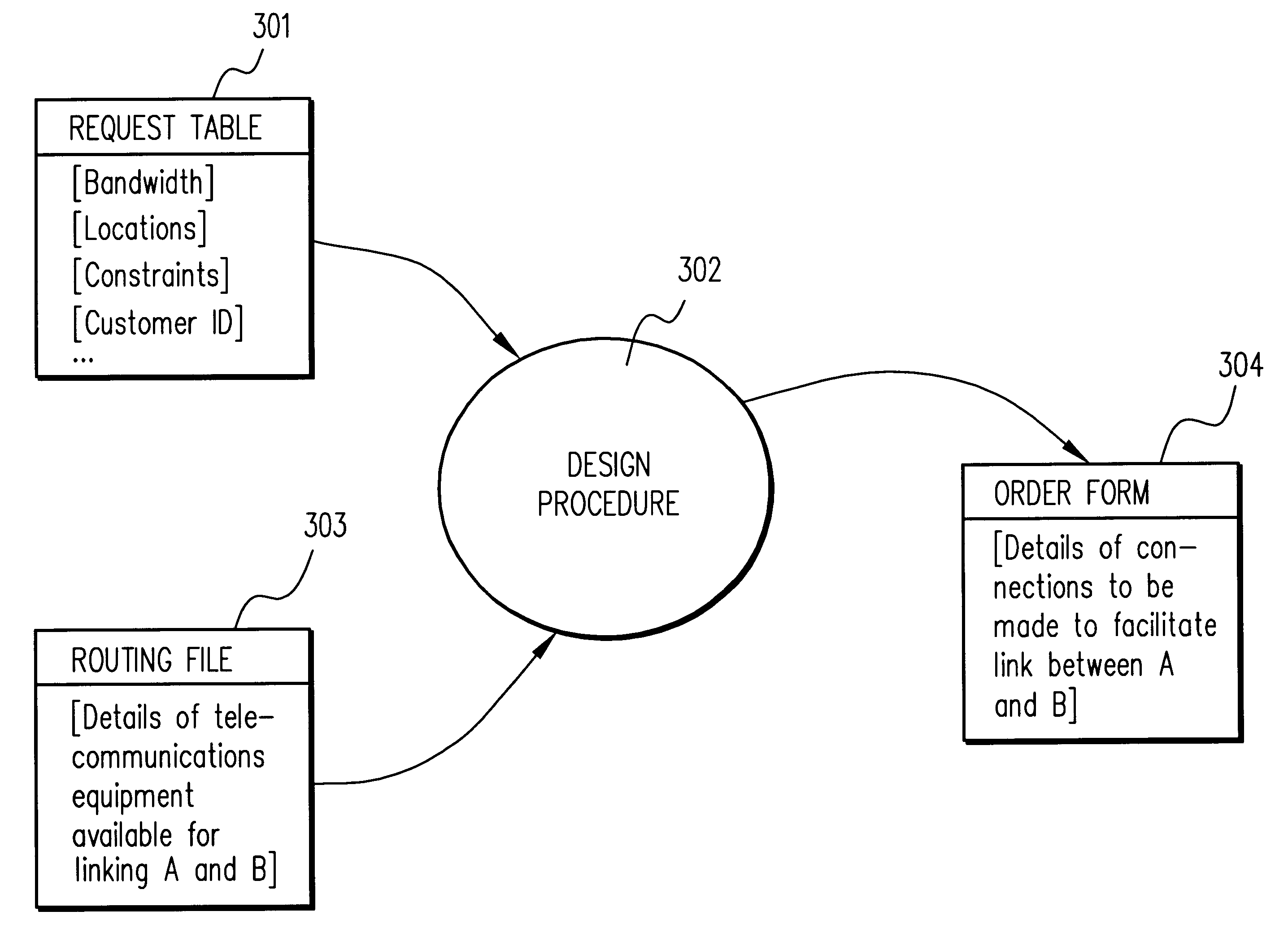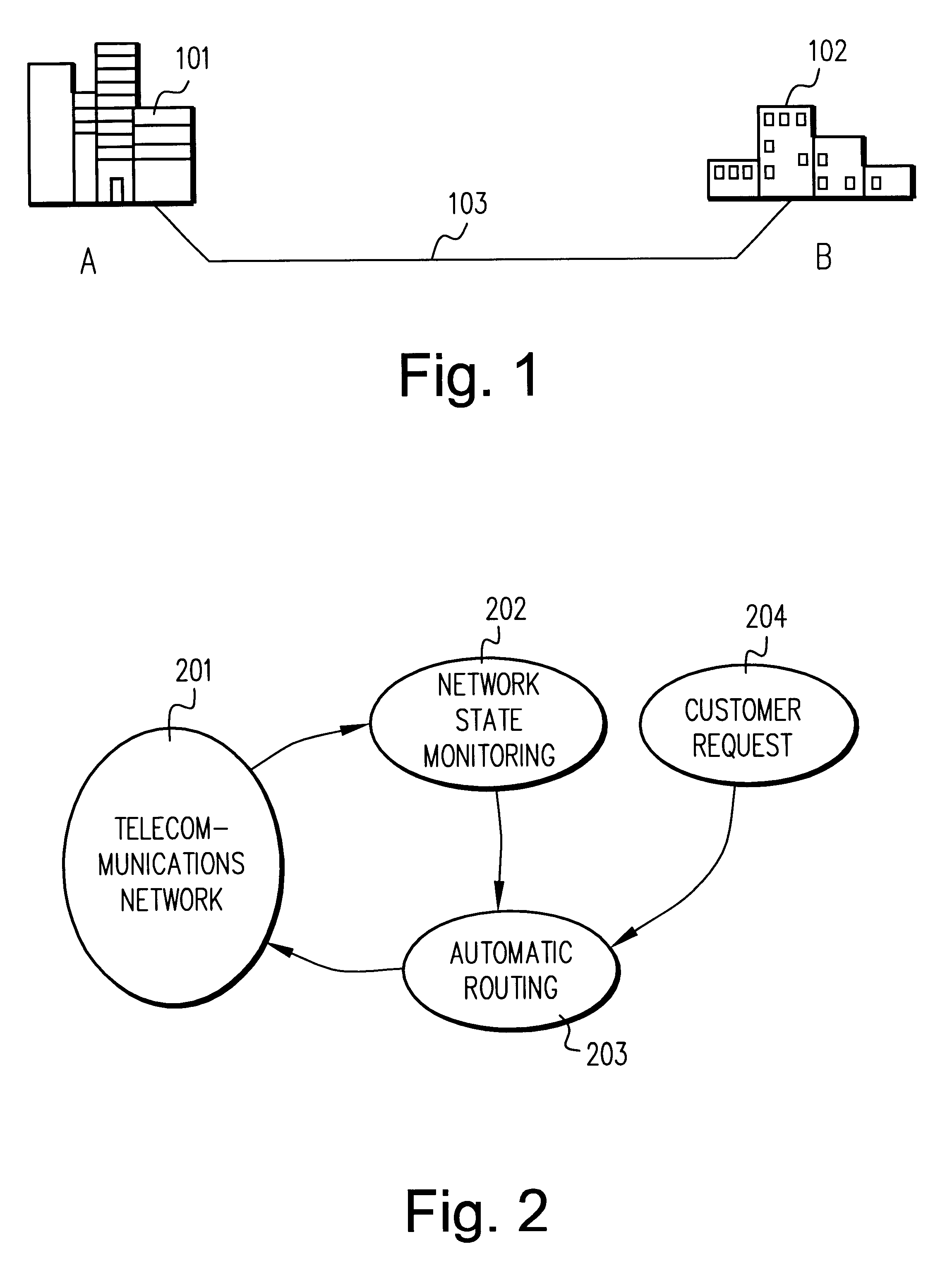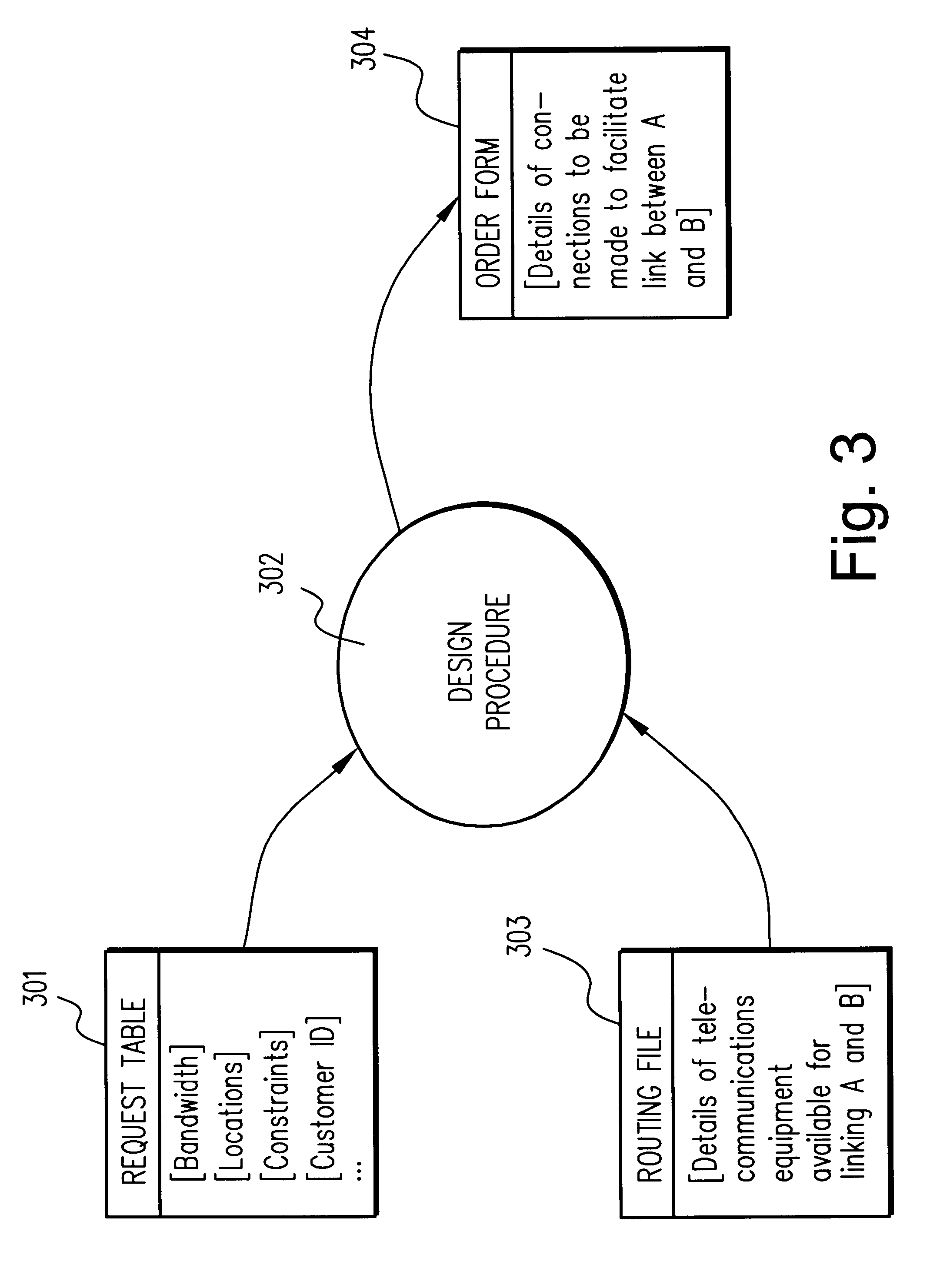Routing in a communications network
- Summary
- Abstract
- Description
- Claims
- Application Information
AI Technical Summary
Problems solved by technology
Method used
Image
Examples
Embodiment Construction
It should be noted that "telecommunications networks" may be referred to in this specification but that the invention should not be considered to be limited to any particular type of communications network by that terminology, such as networks which only connect telephones, but extends to other types of network perhaps carrying data between data processing points for instance.
A hypothetical connection is shown in FIG. 1 between two offices of a company at different geographical locations. An office 101 at geographical location A is connected to an office 102 at geographical location B via a telecommunications link 103, which is provided by a telecommunications provider. Thus FIG. 1 shows a typical example in which a customer requires a permanent route for a telecommunications channel to be set up on its behalf by a telecommunications provider.
Once a user, in this case a company with sites at locations A and B, requests a link of this type to be set up, the telecommunications provide...
PUM
 Login to View More
Login to View More Abstract
Description
Claims
Application Information
 Login to View More
Login to View More - R&D
- Intellectual Property
- Life Sciences
- Materials
- Tech Scout
- Unparalleled Data Quality
- Higher Quality Content
- 60% Fewer Hallucinations
Browse by: Latest US Patents, China's latest patents, Technical Efficacy Thesaurus, Application Domain, Technology Topic, Popular Technical Reports.
© 2025 PatSnap. All rights reserved.Legal|Privacy policy|Modern Slavery Act Transparency Statement|Sitemap|About US| Contact US: help@patsnap.com



